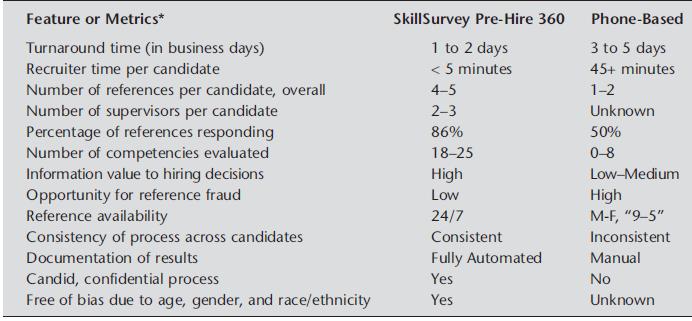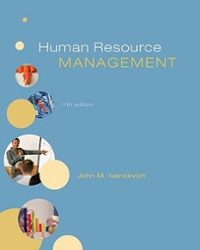The Society of Human Resource Management (SHRM) advocates reference checks to help complete the picture of the
Question:
The Society of Human Resource Management (SHRM) advocates reference checks to help complete the picture of the job candidate. Reference checking is typically done by telephone and usually takes about 45 minutes per reference for an HR representative or hiring manager to complete. However, the process of reference checking can be fraught with problems and inaccuracies. For example, only cursory information may be gathered, and rarely from anyone who has actually worked with the candidate in question. Only one or two references are typically contacted, and the HR representative may neglect to use a process that is consistent from candidate to candidate, even for the same position.
Because it is primarily a manual process, documentation of the results is subject to human and data entry error. For these reasons, perhaps, research has shown reference checks to be ranked 12 in a list of 18 predictors of job performance. Given the potential of reference checks to improve the quality of hire, however, it is no wonder that practitioners have been examining a number of methods to improve the reference checking process.
A company called SkillSurvey, Inc., located in Berwyn, Pennsylvania, is trying to elevate the status of reference checking. Building on the increasing Internet penetration in the United States and throughout the world, SkillSurvey, Inc., has developed the award-winning SkillSurvey Pre-Hire 360 , accomplishing what is called "on-demand" reference checking. Competencybased reference checking is conducted over the Internet and uses a 360-degree format. Guided by the principle that future success is predicted by past behavior, those who have worked with a candidate in a variety of relationships--former managers, peers, colleagues, direct reports, teachers, and customers--are all used as references for a single candidate. This efficient new process usually takes under five minutes of a recruiter's time. On average, the reference response rate is 86 percent, yielding feedback from four or five references per candidate. The reference feedback is reliable, and shows no discernable age, gender, or race/ethnicity bias.
One would think that candidates would only choose those who will give them a good reference.
However, it turns out that 6.6 percent of all candidates score in the "low" range, and thus could be considered a hiring "risk." An additional 15 percent score in the "medium" range-- certainly warranting a follow-up interview with some additional probing. A comparison of the SkillSurvey Pre-Hire 360 features and metrics to those of phone-based reference checking is summarized below:
Two case studies illustrate the cost advantages of the new method. In the first study, a large engineering firm, 233 candidates were reference-checked over a six-week period. Compared to the company's previous use of phone reference checking, the SkillSurvey method saved the company approximately five workweeks of a recruiter's time and salary.
In the second study, a large firm that conducts recruitment process outsourcing, 12,000 references are checked per year. Each reference takes approximately 45 minutes to complete for a fairly high paid individual ($50,000 per year); this equates to 9,000 total hours annually spent on phone references. The total cost of telephone reference checking was $216,346 annually, whereas the SkillSurvey method cost the firm $64,152 annually, resulting in a 70 percent reduction in cost. The Internet and computer technologies are opening up new ways of doing business.
SkillSurvey is capitalizing on these new trends and many other human resource functions are sure to follow. It makes sense that organizations will increasingly migrate to human resource methodologies that are more cost effective, efficient, valid, reliable, and fair.
Questions
1. Why would some employers resist using the SkillSurvey, Inc., type tool?
2. What implications does “on demand” reference checking have for job seekers?
3. Are the metrics displayed in the comparison table convincing enough to favor one of the techniques or are the data not relevant? Discuss.
Step by Step Answer:






